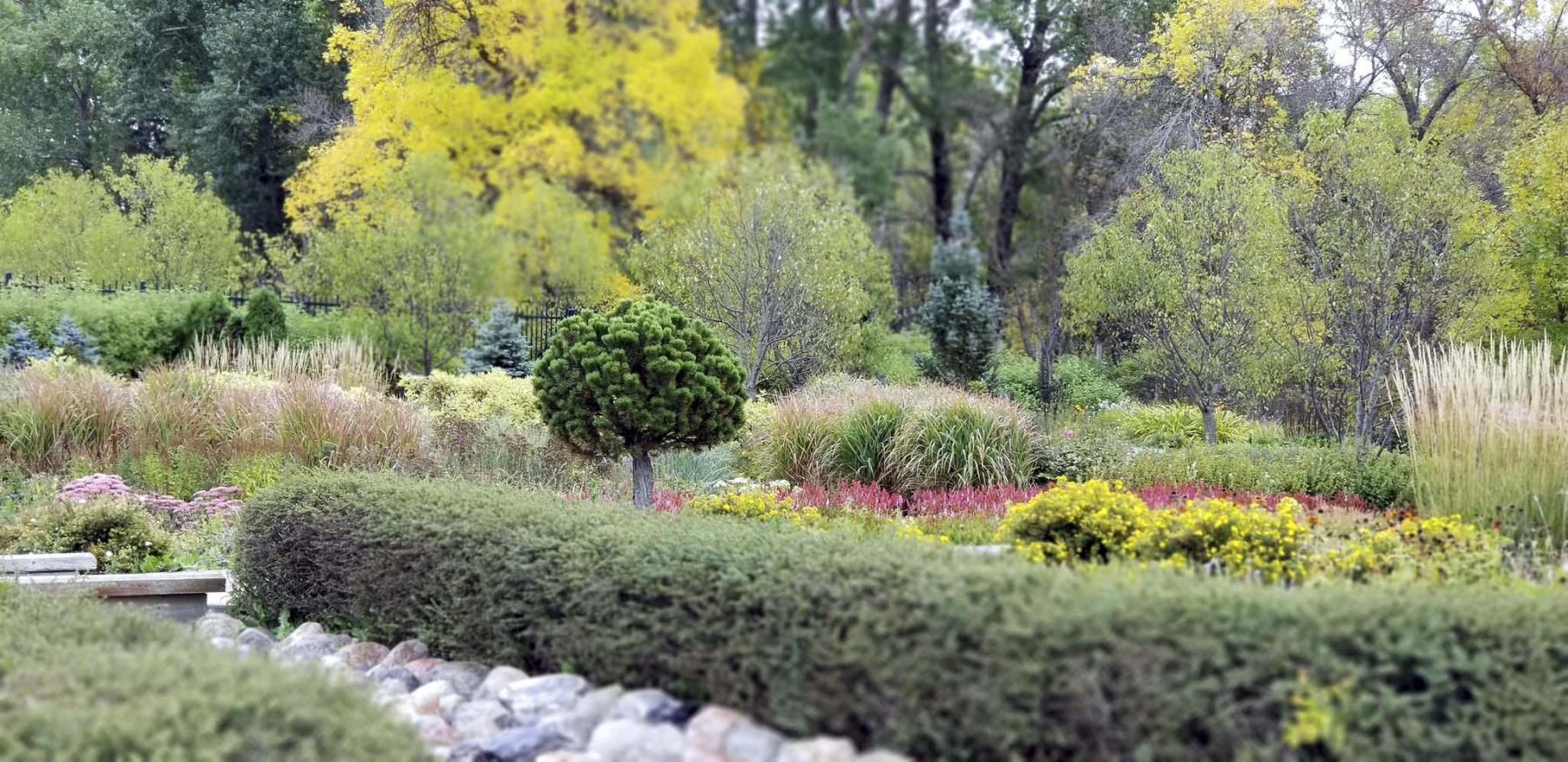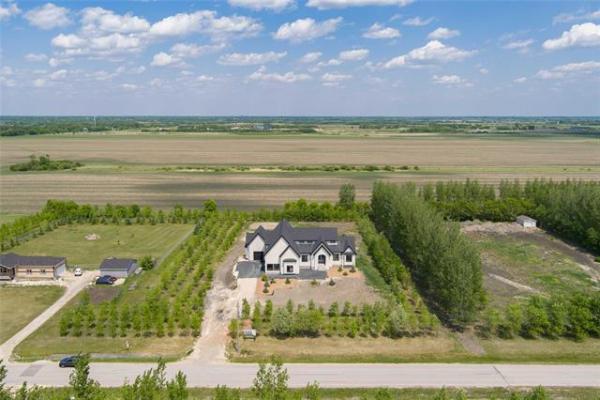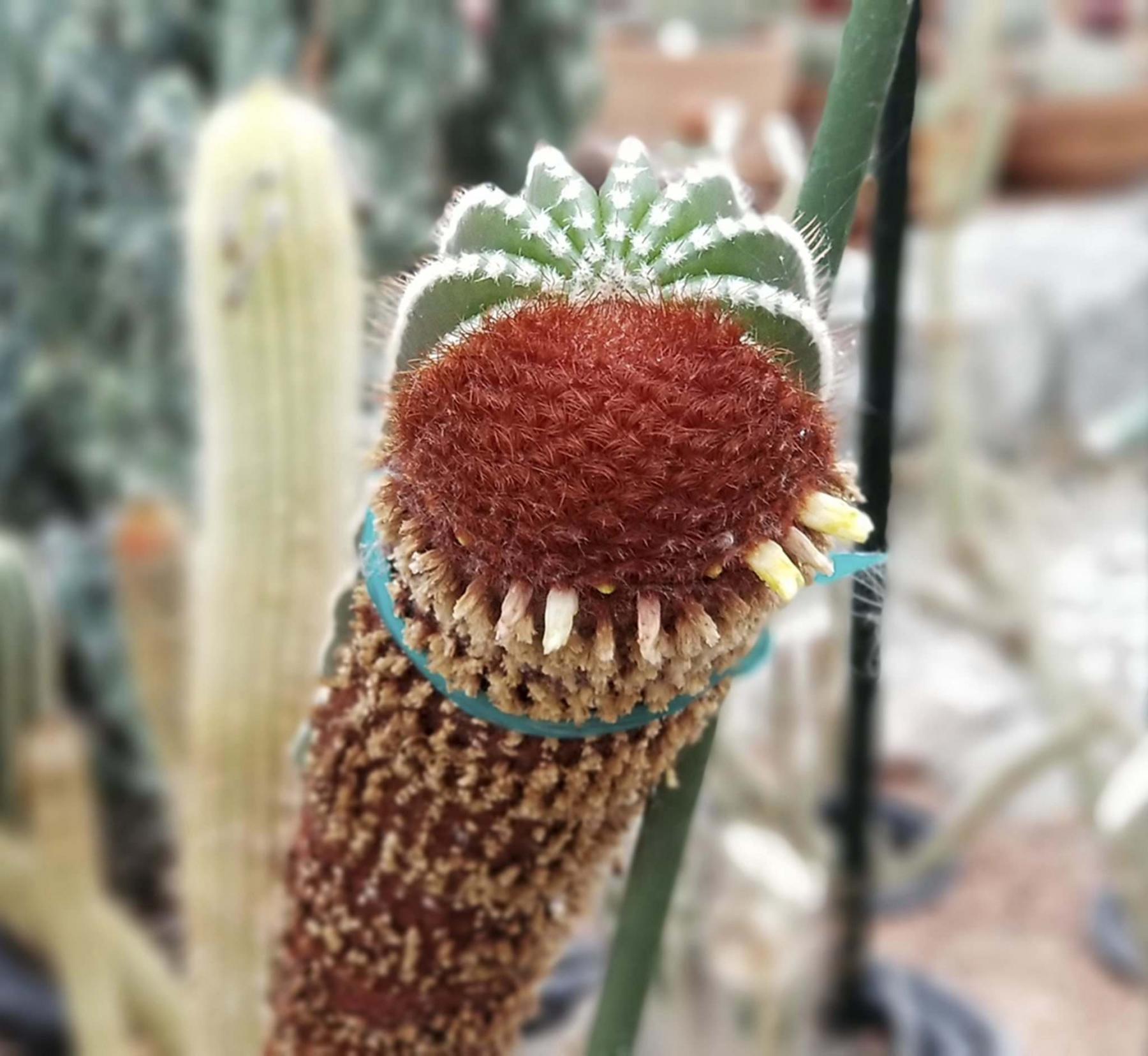
This Coleocephalocereus pluricostatus has a seemingly toothy grin.
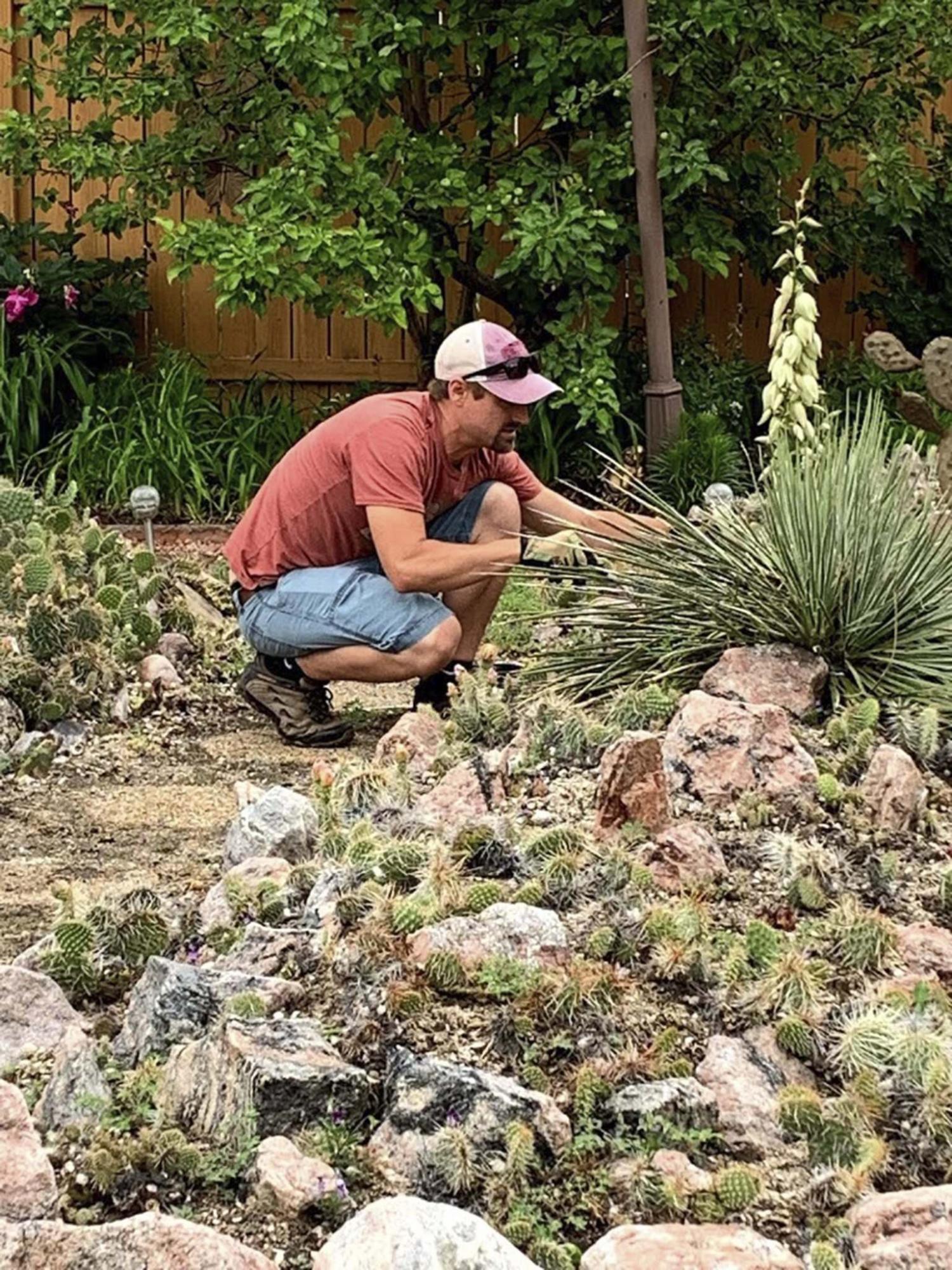
Tracy Theriault
Johannes Olwages, International Peace Garden’s director of horticulture, extracts hardy cacti grown by Ernie Brown in his Transcona garden.
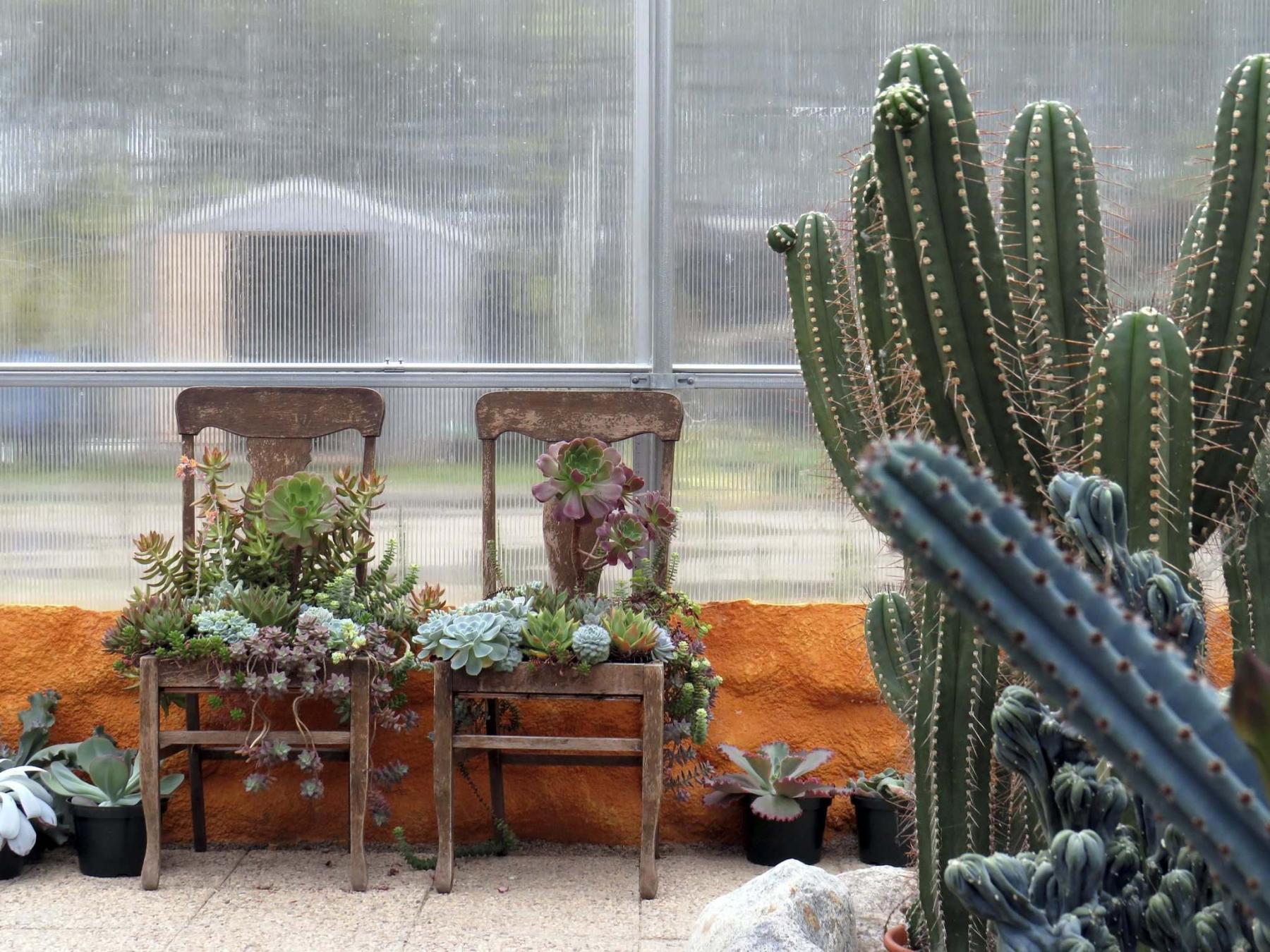
Beyond the greenhouse walls at the gardens, a major new expansion is being planned.
If you haven’t visited in a very long time, the first impression you will have of the International Peace Garden is that it is nothing like what you remember. Forget the boring floral clock planted with 2,000 to 5,000 annuals — not because annuals at this time of year are finished for the season but because IPG is forging a new and exciting direction.
Intimidated by the prospect of the 288-kilometre road trip from Winnipeg to the gardens? I let that get in my way for too long as well, until my recent visit when I realized the route is easy and straightforward. At the end of September, I travelled there with an excellent companion, Dr. Carla Zelmer of the biological sciences department at the University of Manitoba. We wanted to learn more about the work being done by Johannes Olwages, director of horticulture — the visit exceeded our expectations.
Olwages greeted us on our arrival. He exudes the kind of energy and enthusiasm that you see in someone who is doing what he loves. Olwages lives on-site with his wife and small children, who are at home in the spacious gardens, growing up with all the plants and the exciting changes at the gardens that are moving at a fast pace. How cool is that?
Before we went inside the conservatory, Olwages took us through the gloriously beautiful five-acre sunken garden, planted with a wide range of native perennials, shrubs and trees. "The gardens are an example of the types of plants that can grow in zone 2 and 3," Olwages says. "We’re working with the natural landscape and growing conditions, as well as creating a functional ecosystem that illustrates as much diversity as possible so that we can support our native insects and maximize the value to nature."
Throughout the utterly beautiful garden, there are richly layered borders planted with hedges, unique varieties of ornamental grasses such as Korean feather reed grass and Autumn Red maiden grass and an abundance of flowering perennials. The lush gardens are set against a backdrop of 2,300 acres of parkland forest consisting mostly of aspen, birch and oak trees. An arboretum planted with maple trees and other varieties is still in its infancy but will serve to boost biodiversity and extend the fall colour.
"Biodiversity and conservation is very much a part of our policy as we look into the future," Olwages says. Nowhere is that more evident than inside the conservatory, which is home to more than 5,000 species of cacti and succulents from around the world. The extraordinary collection was gifted to the garden in 2009 by Don Vitko of Minot, N.D. What few know is that the amazing collection is not able to be displayed in its entirety because of a lack of space.
Over the next three years, IPG will undergo a major expansion, which will see the conservatory double in size from 929 to 1858 square metres. The modern new space will have radiant floor heating and may even include viewing platforms. Just outside the year-round desert garden greenhouse, signs are evident that work will soon be underway. The plans are for a long gallery adjacent to the conservatory that will serve as a unique transition space and can be used year-round for small or large events. It will connect to an outside formal patio that will include water features. The patio will lead into the aspen forest, where winding pathways are being created.
The proposed expansion also calls for numerous upgrades and repairs to the outdoor infrastructure, including the iconic canal channel and stone bridges. There are plans, too, for expanded wireless connectivity and interactive interpretive signage. New play areas and a children’s garden are being designed as well.
There is something very special that is also being planned. The first hint can be found in the new wording etched on the glass entrance to the conservatory: "Additional collection donations from Ernie Brown (Dr. Cacti) of Winnipeg, MB."
Brown, who passed away earlier this year, lived in Transcona where he was a member of the Transcona Garden Club. I first met him when I visited his garden as part of a garden tour. Brown had an extraordinary indoor cactus collection, as well as hardy cacti. Over his lifetime, Brown amassed 21 different varieties and species that are hardy to our climate. Through the donation of his private collection to the gardens, Brown leaves an indelible mark on the cactus conservatory.
"Most people have no idea that there are native cactus species in Manitoba which can survive our winter climate," Olwages says. In May, Olwages visited Brown’s garden and extracted the cacti. Currently, they are being stored until next year when they will be planted into an outdoor xeric garden, which Olwages says will reach epic proportions as the hardy cacti are propagated.
Brown had 300 indoor cactus specimens that are currently being replanted into bigger pots. For now, two of his notocactus (Parodia genus) flank the inside entrance to the conservatory.
What more awaits you at the conservatory? The species richness provides a visual experience that will transport you to unknown places. The high-ceilinged conservatory houses enormously tall columnar cacti to smaller specimens with otherworldly shapes and textures. The cacti are grouped according to their genus and continent of origin. In the next development phase, there will be a focus on the deserts of the world, which means that the cactus collection will be grouped according to eco-regions instead of countries or continents.
Olwages grew up in the Namib, a coastal desert in southern Africa. He studied at Stellenbosch University in South Africa’s Western Cape province, also known as the Cape floristic kingdom and the most diverse (and the smallest) floristic kingdom of all the six plant kingdoms. It is an eco-region that today has suffered an irrevocable loss of biodiversity.
Arid and semi-arid areas are some of the most sensitive in the world to disturbance. "We can fix a lot of things with plants," says Olwages, who envisions exchanging at-risk dryland plant species with other conservatories in the future.
It’s fascinating to see weird and wonderful species such as Coleocephalocereus pluricostatus, a colourful cactus that is native to Brazil, or Cereus peruvianus Queen of the Night, a night-blooming cactus (some types bloom only a single night a year) native to Arizona.
In one area of the conservatory, there is an amazing group of blue columnar cacti known as Pilosocereus, which have intriguing tufts of fur. Nestled in the fur are flowers, which in the wild are pollinated by bats.
Succulent lovers will go wild for the creative dish arrangements that can be found throughout the greenhouses.
Set your expectations high for what awaits you at IPG — you won’t be disappointed. It may even inspire you to do small random acts of biodiversity in your own backyard. There’s no need to wait until next spring before you visit. In winter, the indoor temperature of the conservatory’s greenhouses is maintained at a balmy 18 C, which becomes even warmer on sunny days.
colleenizacharias@gmail.com

